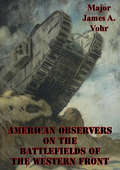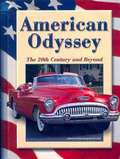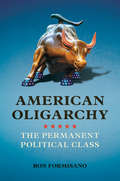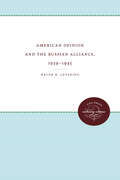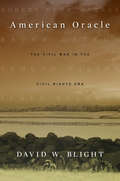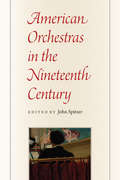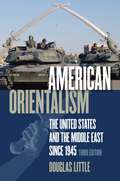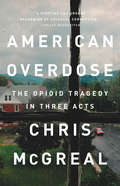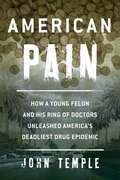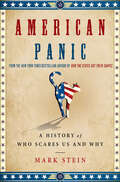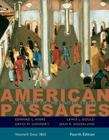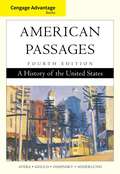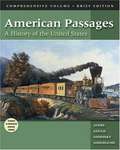- Table View
- List View
American Observers On The Battlefields Of The Western Front
by Major James A. Vohr USMCAlthough during World War I the United States employed observers on the battlefields of the Western Front, the information they provided lacked the substance and conclusions required to evolve the tactical doctrine of the American Expeditionary Forces (AEF). In initial engagements, the AEF was largely forced to rely, with predictable negative outcome, upon outdated concepts founded largely upon the prejudices of the Army's leadership.In August of 1914 the United States Army and Marine Corps demonstrated strong foresight, considering the isolationist perspective of the nation, in detailing officers to the battlefields of Europe. These officers were given little guidance, but their mission was clearly to report on military actions and developments in what was becoming the largest struggle in history. A significant military development of World War I noted by the U.S. was the advance of offensive infantry tactics to cope effectively with the characteristics and lethality of the modern battlefield.The United States, with a two and one-half year opportunity to observe tactics prior to the engagement of the AEF, arguably should have benefited from the experience of others. However, this was not the case. The AEF in its initial engagements, performed much as its European counterparts did at the onset of the war. Eventually the AEF performance improved, but only as U.S. soldiers and Marines gained personal battlefield experience.
American Odyssey (A Ghost Rifle Western #2)
by Max McCoyMax McCoy, the Spur Award-winning author of Damnation Road, continues his American Western saga of the Ghost Rifle as the violence and bloodshed the weapon caused return to haunt the man who created it . . .THE WEAPON AND THE WILDERNESS Ten years have passed since Jack Picaro lost his Ghost Rifle—the firearm he invented, the one that never missed its target. The loss of the rifle calmed the hellraiser in his soul. Instead of returning to the gambling halls and whiskey bars of St. Louis, Jack has spent the last decade as a fur trapper in Wyoming&’s Wild River Range, married to Sky, the daughter of an Arikara war chief. Then, after helping rescue U.S. soldiers captured by Crow Indians in the Rocky Mountains, Jack hears the familiar bell-like report of his Ghost Rifle. Determined to retrieve his deadly property, he travels deep into Lakota territory, facing down old enemies—and resuming old sinful habits—unaware of what awaits him when he eventually returns home to his family.&“Few Western writers today can spin a tale with style, wit, and rawness better than Max McCoy.&”—Johnny D. Boggs, Western Heritage and Spur Award-winning author of West Texas Kill
American Odyssey: The 20th Century and Beyond
by Gary B. NashThe book covers relationships, interprets evidence, and connects the present to the past--that's what history is all about.
American Odyssey: The United States In The 20th Century
by Gary B. NashThe Americas had long been the home to a rich variety of Native American cultures. Hundreds of years ago, however, other peoples-- Europeans and enslaved Africans--set foot in what was to them a new world. Together they created the United States of America--a nation founded on the promise of liberty and equality for all the diverse people who have contributed to its success.
American Odyssey: The United States in the 20th Century
by Gary B. NashA history of the United States in the twentieth century, featuring sociological and cultural events, as well as strictly historical, and using many pertinent literary excerpts.
American Odyssey: The United States in the 20th Century
by Gary B. NashA history of the United States in the twentieth century, featuring sociological and cultural events, as well as strictly historical, and using many pertinent literary excerpts.
American Odyssey: The United States in the Twentieth Century
by Gary B. NashA history of the United States in the twentieth century, featuring sociological and cultural events, as well as strictly historical, and using many pertinent literary excerpts.
American Oligarchs: The Kushners, The Trumps, And The Marriage Of Money And Power
by Andrea BernsteinA multigenerational saga of two families, who rose from immigrant roots to the pinnacle of wealth and power, that tracks the unraveling of American democracy. <P><P>In American Oligarchs, award-winning investigative journalist Andrea Bernstein tells the story of the Trump and Kushner families like never before. Their journey to the White House is a story of survival and loss, crime and betrayal, that stretches from the Klondike Gold Rush, through Nazi-occupied Poland and across the American Century, to our new gilded age. In building and maintaining their dynastic wealth, these families came to embody the rising nationalism and inequality that has pushed the United States to the brink of oligarchy. <P><P>Building on her landmark reporting for the acclaimed podcast Trump, Inc. and The New Yorker, Bernstein’s painstaking detective work brings to light new information about the families’ arrival as immigrants to America, their paths to success, and the business and personal lives of the president and his closest family members. <P><P>Bernstein traces how the two families ruthlessly harnessed New York and New Jersey machine politics to gain valuable tax breaks and grew rich on federal programs that bolstered the middle class. She shows how the Trump Organization, denied credit by American banks, turned to shady international capital. She reveals astonishing new details about Charles Kushner’s attempts to ensnare his brother-in-law with a prostitute and explores how Jared Kushner and his father used a venerable New York newspaper to bolster their business empire. <P><P>Drawing on more than two hundred interviews and more than one hundred thousand pages of documents, many previously unseen or long forgotten, Bernstein shows how the Trumps and the Kushners repeatedly broke rules and then leveraged secrecy, intimidation, and prosecutorial and judicial power to avoid legal consequences. <P><P>The result is a compelling narrative that details how the Trump and Kushner dynasties encouraged and profited from a system of corruption, dark money, and influence trading, and that reveals the historical turning points and decisions—on taxation, regulation, white-collar crime, and campaign finance laws—that have brought us to where we are today. <P><P><b>A New York Times Bestseller</b>
American Oligarchy: The Permanent Political Class
by Ron FormisanoA permanent political class has emerged on a scale unprecedented in our nation 's history. Its self-dealing, nepotism, and corruption contribute to rising inequality. Its reach extends from the governing elite throughout nongovernmental institutions. Aside from constituting an oligarchy of prestige and power, it enables the creation of an aristocracy of massive inherited wealth that is accumulating immense political power. In a muckraking tour de force reminiscent of Lincoln Steffens, Upton Sinclair, and C. Wright Mills, American Oligarchy demonstrates the way the corrupt culture of the permanent political class extends down to the state and local level. Ron Formisano breaks down the ways this class creates economic inequality and how its own endemic corruption infects our entire society. Formisano delves into the work of not just politicians but lobbyists, consultants, appointed bureaucrats, pollsters, celebrity journalists, behind-the-scenes billionaires, and others. Their shameless pursuit of wealth and self-aggrandizement, often at taxpayer expense, rewards channeling the flow of income and wealth to elites. That inequality in turn has choked off social mobility and made a joke of meritocracy. As Formisano shows, these forces respond to the oligarchy 's power and compete to bask in the presence of the .01 percent. They also exacerbate the dangerous instability of an American democracy divided between extreme wealth and extreme poverty.
American Opinion and the Russian Alliance, 1939-1945
by Ralph B. LeveringIn this analysis of the years of greatest American friendship with the Soviet Union, Levering comes to two conclusions. First, cosmopolitan, educated Americans of all classes were much more likely to change their negative attitudes of 1939 to positive ones by 1943 than were the provincial and poorly educated. Second, governmental leaders and the media, whether conservative or liberal, did not prepare the public for the probable realities of postwar international politics.Originally published in 1976.A UNC Press Enduring Edition -- UNC Press Enduring Editions use the latest in digital technology to make available again books from our distinguished backlist that were previously out of print. These editions are published unaltered from the original, and are presented in affordable paperback formats, bringing readers both historical and cultural value.
American Oracle: The Civil War in the Civil Rights Era
by David W. Blight“The ghosts of the Civil War never leave us, as David Blight knows perhaps better than anyone, and in this superb book he masterfully unites two distant but inextricably bound events.”―Ken Burns Standing on the steps of the Lincoln Memorial on August 28, 1963, a century after the signing of the Emancipation Proclamation, Martin Luther King, Jr., declared, “One hundred years later, the Negro still is not free.” He delivered this speech just three years after the Virginia Civil War Commission published a guide proclaiming that “the Centennial is no time for finding fault or placing blame or fighting the issues all over again.” David Blight takes his readers back to the centennial celebration to determine how Americans then made sense of the suffering, loss, and liberation that had wracked the United States a century earlier. Amid cold war politics and civil rights protest, four of America’s most incisive writers explored the gulf between remembrance and reality. Robert Penn Warren, the southern-reared poet-novelist who recanted his support of segregation; Bruce Catton, the journalist and U.S. Navy officer who became a popular Civil War historian; Edmund Wilson, the century’s preeminent literary critic; and James Baldwin, the searing African-American essayist and activist—each exposed America’s triumphalist memory of the war. And each, in his own way, demanded a reckoning with the tragic consequences it spawned. Blight illuminates not only mid-twentieth-century America’s sense of itself but also the dynamic, ever-changing nature of Civil War memory. On the eve of the 150th anniversary of the war, we have an invaluable perspective on how this conflict continues to shape the country’s political debates, national identity, and sense of purpose.
American Orchestras in the Nineteenth Century
by John SpitzerStudies of concert life in nineteenth-century America have generally been limited to large orchestras and the programs we are familiar with today. But as this book reveals, audiences of that era enjoyed far more diverse musical experiences than this focus would suggest. To hear an orchestra, people were more likely to head to a beer garden, restaurant, or summer resort than to a concert hall. And what they heard weren’t just symphonic works—programs also included opera excerpts and arrangements, instrumental showpieces, comic numbers, and medleys of patriotic tunes.This book brings together musicologists and historians to investigate the many orchestras and programs that developed in nineteenth-century America. In addition to reflecting on the music that orchestras played and the socioeconomic aspects of building and maintaining orchestras, the book considers a wide range of topics, including audiences, entrepreneurs, concert arrangements, tours, and musicians’ unions. The authors also show that the period saw a massive influx of immigrant performers, the increasing ability of orchestras to travel across the nation, and the rising influence of women as listeners, patrons, and players. Painting a rich and detailed picture of nineteenth-century concert life, this collection will greatly broaden our understanding of America’s musical history.
American Orientalism
by Douglas LittleDouglas Little explores the stormy American relationship with the Middle East from World War II through the war in Iraq, focusing particularly on the complex and often inconsistent attitudes and interests that helped put the United States on a collision course with radical Islam early in the new millennium. After documenting the persistence of "orientalist" stereotypes in American popular culture, Little examines oil, Israel, and other aspects of U.S. policy. He concludes that a peculiar blend of arrogance and ignorance has led American officials to overestimate their ability to shape events in the Middle East from 1945 through the present day, and that it has been a driving force behind the Iraq war. For this updated third edition, Little covers events through 2007, including a new chapter on the Bush Doctrine, demonstrating that in many important ways, George W. Bush's Middle Eastern policies mark a sharp break with the past.
American Originals
by Paul K. ConkinIn a work of striking breadth and clarity, Paul Conkin offers an even-handed and in-depth look at the major American-made forms of Christianity--a diverse group of religious traditions, each of which reflects a significant break from western Christian orthodoxy. Identifying six distinctive types, Conkin examines the major denominations representative of each original variety of American Christianity: restoration (Churches of Christ, Disciples of Christ); humanistic (Unitarians, Universalists); apocalyptic (Adventists, Jehovah's Witnesses); Mormon (Church of Jesus Christ of Latter-day Saints); spiritual (Christian Science, Unity); and ecstatic (Holiness and Pentecostal denominations). Focusing on the early years and maturation of these groups, he discusses their founders and leaders, origins and Old World roots, and essential doctrines and practices. Conkin closes each chapter with a guide to further reading. The first comprehensive survey of these American originals, this book will serve as a valuable resource on a number of religious traditions whose members not only comprise a significant percentage of the American population but also make up an increasing proportion of Christian converts worldwide.
American Overdose: The Opioid Tragedy in Three Acts
by Chris McGrealA comprehensive portrait of a uniquely American epidemic--devastating in its findings and damning in its conclusionsThe opioid epidemic has been described as "one of the greatest mistakes of modern medicine." But calling it a mistake is a generous rewriting of the history of greed, corruption, and indifference that pushed the US into consuming more than 80 percent of the world's opioid painkillers.Journeying through lives and communities wrecked by the epidemic, Chris McGreal reveals not only how Big Pharma hooked Americans on powerfully addictive drugs, but the corrupting of medicine and public institutions that let the opioid makers get away with it.The starting point for McGreal's deeply reported investigation is the miners promised that opioid painkillers would restore their wrecked bodies, but who became targets of "drug dealers in white coats."A few heroic physicians warned of impending disaster. But American Overdose exposes the powerful forces they were up against, including the pharmaceutical industry's coopting of the Food and Drug Administration and Congress in the drive to push painkillers--resulting in the resurgence of heroin cartels in the American heartland. McGreal tells the story, in terms both broad and intimate, of people hit by a catastrophe they never saw coming. Years in the making, its ruinous consequences will stretch years into the future.
American Pain: How a Young Felon and His Ring of Doctors Unleashed America's Deadliest Drug Epidemic
by John Temple* Finalist for the Edgar® Award in Best Fact Crime * New York Post, &“The Post&’s Favorite Books of 2015&” * Suspense Magazine&’s &“Best True Crime Books of 2015&”* Foreword Reviews&’ INDIEFAB Book of the Year in True Crime * Publishers Weekly, Big Indie Book of Fall 2015The king of the Florida pill mills was American Pain, a mega-clinic expressly created to serve addicts posing as patients. From a fortress-like former bank building, American Pain&’s doctors distributed massive quantities of oxycodone to hundreds of customers a day, mostly traffickers and addicts who came by the vanload. Inked muscle-heads ran the clinic&’s security. Former strippers operated the pharmacy, counting out pills and stashing cash in garbage bags. Under their lab coats, the doctors carried guns—and it was all legal… sort of.American Pain was the brainchild of Chris George, a 27-year-old convicted drug felon. The son of a South Florida home builder, Chris George grew up in ultra-rich Wellington, where Bill Gates, Springsteen, and Madonna kept houses. Thick-necked from weightlifting, he and his twin brother hung out with mobsters, invested in strip clubs, brawled with cops, and grinned for their mug shots. After the housing market stalled, a local doctor clued in the brothers to the burgeoning underground market for lightly regulated prescription painkillers. In Florida, pain clinics could dispense the meds, and no one tracked the patients. Seizing the opportunity, Chris George teamed up with the doctor, and word got out. Just two years later Chris had raked in $40 million, and 90 percent of the pills his doctors prescribed flowed north to feed the rest of the country&’s insatiable narcotics addiction. Meanwhile, hundreds more pain clinics in the mold of American Pain had popped up in the Sunshine State, creating a gigantic new drug industry.American Pain chronicles the rise and fall of this game-changing pill mill, and how it helped tip the nation into its current opioid crisis, the deadliest drug epidemic in American history. The narrative swings back and forth between Florida and Kentucky, and is populated by a gaudy and diverse cast of characters. This includes the incongruous band of wealthy bad boys, thugs and esteemed physicians who built American Pain, as well as penniless Kentucky clans who transformed themselves into painkiller trafficking rings. It includes addicts whose lives were devastated by American Pain&’s drugs, and the federal agents and grieving mothers who labored for years to bring the clinic&’s crew to justice.
American Pandemic: The Lost Worlds of the 1918 Influenza Epidemic
by Nancy K. BristowThis readable and compelling account explains the role of race, gender and class, promotion of physical fitness and public education, and America's public health strategy during the influenza epidemics in 1918, 1919, 1920, and 1922. Bristow's work distinguishes itself with her emphasis on influenza epidemics beyond 1918-1919, the roles of physicians and nurses, the importance of public health nursing, and the personal revelation that she lost great-grandparents due to influenza.
American Panic: A History of Who Scares Us and Why
by Mark SteinIn American Panic , New York Times bestselling author Mark Stein traces the history and consequences of American political panics through the years. Virtually every American, on one level or another, falls victim to the hype, intensity, and propaganda that accompanies political panic, regardless of their own personal affiliations. By highlighting the similarities between American political panics from the Salem witch hunt to present-day vehemence over issues such as Latino immigration, gay marriage, and the construction of mosques, Stein closely examines just what it is that causes us as a nation to overreact in the face of widespread and potentially profound change. This book also devotes chapters to African Americans, Native Americans, Catholics, Mormons, Jews, Chinese and Japanese peoples, Communists, Capitalists, women, and a highly turbulent but largely forgotten panic over Freemasons. Striking similarities in these diverse episodes are revealed in primary documents Stein has unearthed, in which statements from the past could easily be mistaken for statements today. As these similarities come to light, Stein reveals why some people become panicked over particular issues when others do not.
American Paper Son: A Chinese Immigrant in the Midwest (Asian American Experience)
by Wayne Hung WongIn the early and mid-twentieth century, Chinese migrants evaded draconian anti-immigrant laws by entering the US under false papers that identified them as the sons of people who had returned to China to marry. Wayne Hung Wong tells the story of his life after emigrating to Wichita, Kansas, as a thirteen-year-old paper son. After working in his father’s restaurant as a teen, Wong served in an all-Chinese Air Force unit stationed in China during World War II. His account traces the impact of race and segregation on his service experience and follows his postwar life from finding a wife in Taishan through his involvement in the government’s amnesty program for Chinese immigrants and career in real estate. Throughout, Wong describes the realities of life as part of a small Chinese American community in a midwestern town. Vivid and rich with poignant insights, American Paper Son explores twentieth-century Asian American history through one person’s experiences.
American Passage: The Communications Frontier in Early New England
by Katherine GrandjeanKatherine Grandjean shows that the English conquest of New England was not just a matter of consuming territory, of transforming woods into farms. It entailed a struggle to control the flow of information--who could travel where, what news could be sent, over which routes winding through the woods along the early American communications frontier.
American Passage: The History of Ellis Island
by Vincent J. CannatoAmerican Passage explores the remarkable saga of America’s landmark port of entry, from immigration post to deportation center to mythical icon.“A finely honed account that encompasses both the human story of the immigrant experience, often a sad one, and the political and bureaucratic responses.” —Boston GlobeFor most of New York's early history, Ellis Island had been an obscure little island that barely held itself above high tide. Today the small island stands alongside Plymouth Rock in our nation's founding mythology as the place where many of our ancestors first touched American soil.American Passage captures a time and a place unparalleled in American immigration and history, and articulates the dramatic and bittersweet accounts of the immigrants, officials, interpreters, and social reformers who all played an important role in Ellis Island's chronicle. In this sweeping, often heart-wrenching epic, historian Vincent J. Cannato reveals that the history of Ellis Island is ultimately the story of what it means to be an American.“By bringing us the inspiring and sometimes unsettling tales of Ellis Island, Vincent Cannato’s American Passage helps us understand who we are as a nation.” —New York Times bestselling author Walter Isaacson“Cannato resists the temptation to sentimentalize Ellis Island. He understands that, now as then, immigration is an issue that leaves Americans uncomfortable and contentious, even as it continues to bring new blood and energy into the country. Ellis Island may have been converted into something of a feel-good theme park, but the questions it raises remain unresolved.” —Washington Post
American Passages: A History Of The United States
by David M. Oshinsky Lewis L. Gould Edward L. Ayers Jean R. SoderlundNIMAC-sourced textbook
American Passages: A History of the United States
by Lewis Gould David Oshinsky Edward Ayers Jean SoderlundWith a unique attention to time as the defining nature of history, CENGAGE ADVANTAGE BOOKS: AMERICAN PASSAGES: A HISTORY OF THE UNITED STATES, 4e, offers students a view of American history as a complete, compelling narrative. AMERICAN PASSAGES emphasizes the intertwined nature of three key characteristics of time--sequence, simultaneity, and contingency. With clarity and purpose, the authors convey how events grow from other events, people's actions, and broad structural changes (sequence), how apparently disconnected events occurred in close chronological proximity to one another and were situated in larger, shared contexts (simultaneity), and how history suddenly pivoted because of events, personalities, and unexpected outcomes (contingency).
American Passages: A History of the United States, Brief Edition
by David M. Oshinsky Lewis L. Gould Edward L. Ayers Jean R. SoderlundAMERICAN PASSAGES, Brief Edition is a survey of U.S. History that uses online resources and a fully integrated, text-specific Web site to heighten students' awareness and understanding of the past. Crafted from the comprehensive text of the same title, this concise text follows the chronological contours of U.S. history. Each of its 32 chapters focuses on a discrete set of years--allowing the authors to weave events, movements, and groups of people into a unified narrative. The narrative helps students see the ways that different themes and issues in American history have interacted, and allows them to make connections between those themes and issues. Integrated references to the book's Web site and to AMERICAN JOURNEYS ONLINE--a cross-referenced, hyperlinked library of primary sources that are organized by topic--allow students to experience history from the vantage of those who lived it.AMERICAN PASSAGES: A HISTORY OF THE UNITED STATES, Brief Edition is available in the following split options: American Passages, Comprehensive, Brief Edition, First Edition (Chapters 1-32), ISBN: 0155049518; American Passages, Volume I: To 1877, Brief Edition, First Edition (Chapters 1-16), ISBN: 0155051172; American Passages, Volume II: Since 1863, Brief Edition, First Edition (Chapters 15-32), ISBN: 0155051237.
American Pastoral (American Trilogy #1)
by Philip RothAmerican Pastoral is the story of a fortunate American's rise and fall - of a strong, confident master of social equilibrium overwhelmed by the forces of social disorder. Seymour "Swede" Levov - a legendary high school athlete, a devoted family man, a hard worker, the prosperous inheritor of his father's Newark glove factory - comes of age in thriving, triumphant postwar America. But everything he loves is lost when the country begins to run amok in the turbulent 1960s. Not even the most private, well-intentioned citizen, it seems, gets to sidestep the sweep of history. With vigorous realism, Roth takes us back to the conflicts and violent transitions of the 1960s. This is a book about loving - and hating - America. It's a book about wanting to belong - and refusing to belong - to America. It sets the desire for an American pastoral - a respectable life of space, calm, order, optimism, and achievement - against the indigenous American Berserk.
